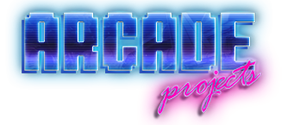lithy
Student
Background: (Unimportant, blah, blah, blah) So I had decided that I wanted to learn just the tiniest little bit about looking at/reading/understanding some of the assembly code behind the games. I have no real background in anything that would make me assume that even the basics would be easy for me. I assume a 5 minute task for the right person might take me 5 weeks. I chose the smallest project I had interest in, patching Knight's Chance so that the attract mode advances to the next slot in a Neo Geo multislot board like the 'official' games do. I have cabs and I like to leave attract modes cycling and Knight's Chance has a great little attract mode, it's a shame that I never leave it in the cabinet because it ends up just repeating itself.
Goal (Small): Modify Knight's Chance P1 rom to allow the game to cycle in a multi slot Neo board. I have a paid digital copy and a bootleg cart. I have a Backbit cart that I should be able to use to test a modified P-rom with the ultimate goal to replace the P1 eprom on my bootleg cart. DONE!
FIX: in a hex editor on the P1 rom at $AB8, change the string from 4E B9 00 01 B2 D0 to 4E F9 00 C0 04 44
It is byteswapped so it will read B9 4E 01 00 D0 B2 and you will change that to F9 4E C0 00 44 04
Save and replace the P1 rom. This change has not been extensively tested but seems to work, please post it you find it causes any issues.
Goal (Medium): Knight's Chance also doesn't seem to show the Neo Geo splash screen, modify to show Neo Geo splash
Goal (Large): Knight's Chance only shows High Scores at the Game Over conclusion of playing a game. Might be nice to at the very least rotate through one of the 4 high score screens during an attract cycle. The hold on the title screen is somewhat lengthy, it could take some of the time from that hold away so as not extend the length of each cycle further.
Mostly, this thread is just a place where I can 'work out loud'. Of course any suggestions or help are appreciated. I already got an assist from @nauman here, along with the smart suggestion to start a thread.
Goal (Small): Modify Knight's Chance P1 rom to allow the game to cycle in a multi slot Neo board. I have a paid digital copy and a bootleg cart. I have a Backbit cart that I should be able to use to test a modified P-rom with the ultimate goal to replace the P1 eprom on my bootleg cart. DONE!
FIX: in a hex editor on the P1 rom at $AB8, change the string from 4E B9 00 01 B2 D0 to 4E F9 00 C0 04 44
It is byteswapped so it will read B9 4E 01 00 D0 B2 and you will change that to F9 4E C0 00 44 04
Save and replace the P1 rom. This change has not been extensively tested but seems to work, please post it you find it causes any issues.
Goal (Medium): Knight's Chance also doesn't seem to show the Neo Geo splash screen, modify to show Neo Geo splash
Goal (Large): Knight's Chance only shows High Scores at the Game Over conclusion of playing a game. Might be nice to at the very least rotate through one of the 4 high score screens during an attract cycle. The hold on the title screen is somewhat lengthy, it could take some of the time from that hold away so as not extend the length of each cycle further.
Mostly, this thread is just a place where I can 'work out loud'. Of course any suggestions or help are appreciated. I already got an assist from @nauman here, along with the smart suggestion to start a thread.
Last edited:



 ). Hopefully you won't get bored while I fumble around. And thanks so much for the tools suggestions, I have family in town for a couple days so might not have time to stare at it but I will definitely come back and give it some more attention.
). Hopefully you won't get bored while I fumble around. And thanks so much for the tools suggestions, I have family in town for a couple days so might not have time to stare at it but I will definitely come back and give it some more attention.